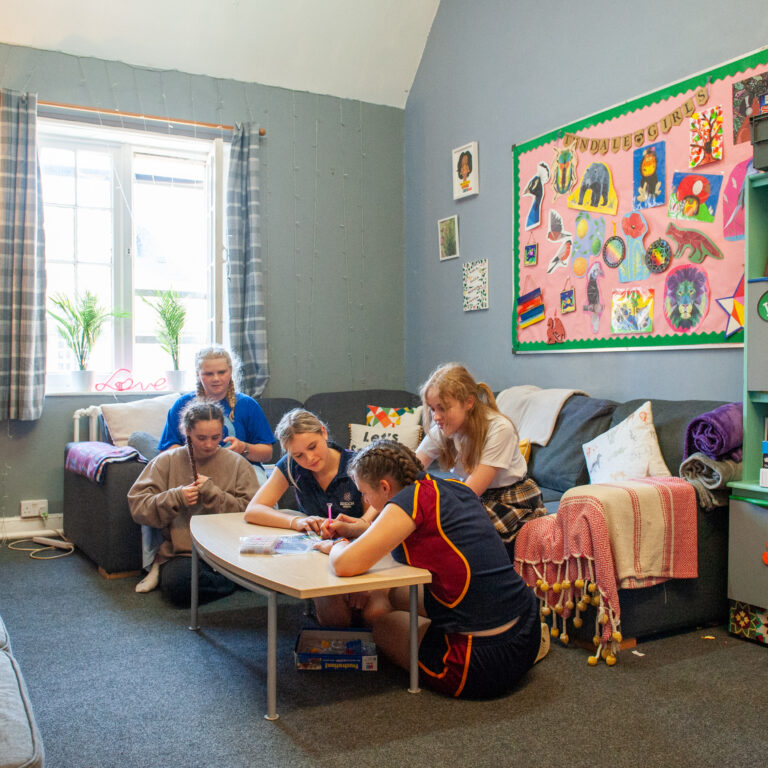Mrs Kelly Weston, Head of the Learning Support team at Bredon School, shares her expert advice on what parents should ask, or look for, when selecting a school for their dyslexic child.
What qualifications do the teaching staff hold?
If your child needs specialist teaching, check to ensure that the staff hold specialist teacher qualifications often referred to as PG. Cert. SpLD or a Diploma in Teaching Learners with Dyslexia (Level 5 or Level 7 equivalent).
These are specific qualifications aligned to teaching pupils with specific learning difficulties.
What is the School’s policy on copying from the board?
Copying from the board is a teaching method which is used fairly frequently in some schools. For a dyslexic child, this seemingly straightforward task can create obstacles to their learning.
Copying from the board causes a delay in a dyslexic pupil’s ability to process what they have just read and it will take them even longer to recreate it on their page. It can add unnecessary visual stress and can exacerbate tracking problems, meaning that few facts are actually being absorbed or retained.
Does the school use handouts?
Schools should not demand that dyslexic children take their own notes in a lesson, unless they are confident in the use of assistive technology to do so. Instead, a handout should be given at the start of the lesson so that the lesson content is clear and makes sense; the pupil then doesn’t need to worry about trying to record notes as well and can use their time and their mind to concentrate on listening and understanding. This relates back to the previous point on copying from the board – if a pupil has a handout with the key information on, they will not need to copy information down themselves and will feel less stressed whilst in a classroom environment.
Does the school use assistive technology?
Some schools refuse to allow dyslexic pupils to use a laptop in class, others insist on it.
If your dyslexic child works well on a laptop there are some fantastic assistive technology programmes out there to help them to produce more quality ‘written’ work.
In an ideal world, a school will embrace these technologies and support both pupils and staff in implementing its use in class. Examples of assistive technology include text-to-speech software and dictation software.
Tools to help with planning, such as mind mapping software, are brilliant in supporting a dyslexic pupils to map their ideas on paper before attempting to write it up.
What is the teaching ethos of the school?
A dyslexic child needs a genuinely multi-sensory teaching approach.
The traditional didactic teaching method of ‘chalk and talk’ will not maximise the potential of any dyslexic pupil. But simple methods developed in order to ‘hit all senses’ such as allowing time to get up and move about, providing visual prompts, incorporating audio sound bites or allowing students the chance to touch something or work with their hands, all increase a dyslexic pupil’s chance of increasing their understanding and improving the retention of information.
How does the teaching differ?
Specialist teachers should be accustomed to providing structured and cumulative systems for teaching. For example, teachers commit to only delivering one or two new teaching points per lesson, and spend the rest of the time focused on revisiting and reinforcing past teaching.
A reduced working memory capacity is often a key feature of dyslexia, for this reason, an experienced teacher will always give pupils thinking time before inviting a response, rather than a ‘first hand up’ approach. This reduces stress immediately and maximises the time available to think, allowing pupils to process and reach their conclusion.
Which classroom tools are used?
Simple adjustments in the classroom and around school can help a dyslexic child too; from the use of contrasting colours on posters – yellow and blue are reportedly the best contrast for many dyslexics – to the carefully chosen colour of ink in the pens used to record information. These things can make it easier for a dyslexic child to read more clearly.
Black text against a white background is too stark for many dyslexic pupils and can cause visual stress. At Bredon School for example, all worksheets and handouts are printed on a softer, buff coloured paper.
Using dyslexia-friendly fonts can help too – traditional fonts such as Times New Roman that use a curly form of the letter ‘a’ can confuse. Simpler fonts like Comic Sans, which are more akin to printed handwriting, use the more familiar forms of letters. All these simple adjustments can be seen to reduce visual stress for the learner.
What is the school’s process of checking access arrangements?
In many cases, dyslexic pupils are eligible for additional time in exams or to receive specialist support in the form a reader or scribe.
If a dyslexic pupil’s normal way of working is to type using a laptop or to use assistive technology, an application can often be made for this to be the mode in which they complete ‘written’ examinations.
It is important that the school knows how to assess pupils for this additional support and ensures that the appropriate access arrangements are put in place; otherwise pupils can be at a distinct disadvantage. After all, the purpose of a special access arrangement is to provide a level playing field for all pupils.
How does the school build pupils’ self-esteem?
Imagine being in a classroom and working twice as hard as some of your non-dyslexic peers to even just record the date and subject matter of the lesson.
Imagine instead finding that one special area in which, for once, you can be the star pupil – where you can shine and feel your confidence soar as you achieve great things!
To ensure that every dyslexic child has their opportunity to shine, it’s vital that a school offers a wide-ranging curriculum enrichment programme. As your child discovers their talent/s, they will grow in self-confidence, ability, and in resilience to face challenges and take risks with their learning.
Whether it be a sport, art, music or engineering, the dyslexic child needs to find an area in which to experience success and to excel.
If you would like to find out more or arrange a visit to Bredon School, please contact: admissions@bredonschool.co.uk.





